Diamonds are a timeless symbol of love, luxury and commitment. They are one of the most sought-after gemstones in the world, and have been adored for centuries. But, not all diamonds are created equal. In fact, there are several different types of diamonds, each with their own unique characteristics and properties. Understanding the differences between these diamond types can make all the difference when it comes to purchasing diamond jewelry. In this ultimate guide, we will explore the different types of diamonds available, including natural diamonds, CVD diamonds, and lab-grown diamonds, to help you make an informed decision when purchasing diamond jewelry. Whether you’re in the market for an engagement ring, wedding band, or simply a beautiful piece of diamond jewelry, this guide will provide you with the knowledge you need to make an informed purchase.
CVD Diamonds
CVD diamonds, also known as synthetic diamonds, are created using a chemical vapor deposition process. In this process, carbon atoms are deposited onto a substrate under high temperatures and pressures, resulting in a diamond structure. CVD diamonds are often used for industrial purposes, such as cutting and drilling, but are also becoming increasingly popular in the jewelry market. They are available in a wide range of colors and are a more affordable option than natural diamonds.
Lab-Grown Diamonds
Lab-grown diamonds, also known as cultured diamonds, are diamonds that are created in a laboratory setting using advanced technology. They are created by replicating the natural diamond-forming process, resulting in a diamond structure that is virtually identical to that of a natural diamond. Lab grown diamonds manufacturer are becoming increasingly popular in the jewelry market, as they are a more sustainable and ethical option than natural diamonds. They are also more affordable, without any compromise on quality and beauty. Lab-grown diamond jewellery is also gaining popularity.
Choosing the Right Diamond
When choosing a diamond, it’s important to consider the 4 C’s: carat weight, cut, color, and clarity. Carat weight refers to the size of the diamond, with one carat equaling 0.2 grams. Cut refers to the diamond’s symmetry, polish, and proportions. Color refers to the diamond’s absence of color, with the highest quality diamonds being completely colorless. Clarity refers to the diamond’s internal and external blemishes and inclusions.
When it comes to choosing between natural, CVD, or lab-grown diamonds, it’s important to consider your personal preferences, budget, and ethical considerations. Natural diamonds are considered the traditional choice and are highly valued for their natural beauty and rarity, but they can be quite expensive. CVD diamonds are a more affordable option, but they are not as durable as natural diamonds. Lab-grown diamonds are a sustainable and ethical choice that is becoming increasingly popular in the jewelry market.
lab grown Diamond Types & Qualities?
Lab-grown diamonds, also known as cultured diamonds, are created using advanced technology in a laboratory setting. They are created by replicating the natural diamond-forming process, resulting in a diamond structure that is virtually identical to that of a natural diamond. There are two main types of lab-grown diamonds: HPHT and CVD. HPHT (high-pressure high-temperature) diamonds are created by mimicking the natural process of diamond formation under high pressure and high temperature conditions. CVD (chemical vapor deposition) diamonds are created by depositing carbon atoms onto a substrate under high temperatures and pressures, resulting in a diamond structure. Both types of lab-grown diamonds are graded according to the same criteria as natural diamonds, using the 4 C’s: carat weight, cut, color, and clarity. They are available in various shapes, sizes, and colors, and are becoming increasingly popular in the jewelry market due to their sustainability and ethical considerations. Lab-grown diamonds are also considered to be more affordable than natural diamonds, without any compromise on quality and beauty. They are also gaining popularity as a lab-grown diamond jewelry. It’s also worth noting that lab-grown diamonds are generally considered as eco-friendly, as they don’t require mining and thus don’t contribute to the destruction of the environment.
Lab-Grown Diamonds: Understanding the Types and Characteristics of CVD and HPHT
There are two main types of lab-grown diamonds : CVD (Chemical Vapor Deposition) and HPHT (High Pressure High Temperature).
CVD diamonds are created by using a chemical process to deposit carbon atoms onto a substrate, which then form into diamond crystals. These diamonds are typically less expensive than natural diamonds and are often used in industrial applications.
HPHT diamonds are created by mimicking the high pressure and high temperature conditions that occur naturally in the Earth’s mantle. These diamonds are typically more expensive than CVD diamonds and are often used in jewelry.
Both types of lab-grown diamonds are physically and chemically identical to natural diamonds, and they are also visually indistinguishable from natural diamonds.
When it comes to lab-grown diamond jewellery, both CVD and HPHT diamonds can be used. The use of lab-grown diamonds in jewelry is becoming increasingly popular because they are more ethically and sustainably sourced than natural diamonds and are often less expensive. They are also beautiful and elegant, and make for great diamond jewellery.
In summary, both types of lab-grown diamonds are physically and chemically identical to natural diamonds, and can be used to create beautiful diamond jewellery. CVD diamonds are typically less expensive and used for industrial applications, while HPHT diamonds are typically more expensive and used for jewellery.
Classifying Diamonds: An Overview of the Different Types and Characteristics
In addition to the different types of lab-grown diamonds, there are also various characteristics that can be used to classify them. These include:
Cut: The cut of a diamond refers to the symmetry, proportion, and finish of the stone. A well-cut diamond will have a good balance of fire, brilliance and scintillation.
Color: Lab-grown diamonds color come in a range of white, yellow, pink, and even blue. The color of a diamond is determined by the presence of impurities or structural defects.
Clarity: Clarity refers to the presence or absence of inclusions and blemishes in a diamond. Lab-grown diamonds can have similar clarity grades as natural diamonds, ranging from flawless to included.
Size: Lab-grown diamonds can come in a range of sizes, from very small to large. The size of a diamond is measured in carats.
By considering the combination of these characteristics, one can classify lab-grown diamonds and differentiate them from natural diamonds.
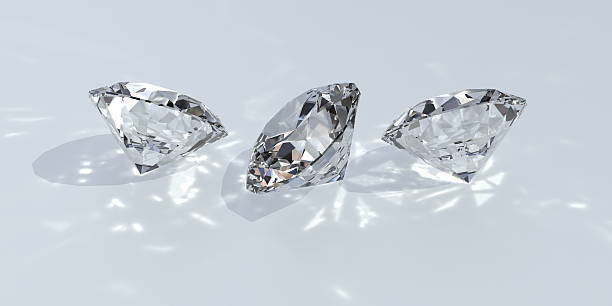
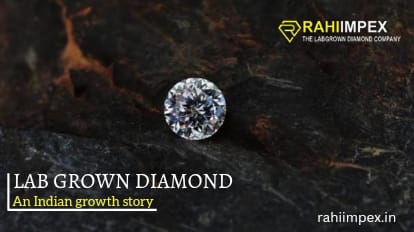
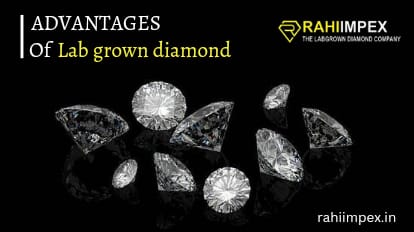
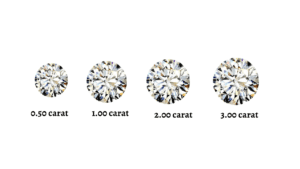
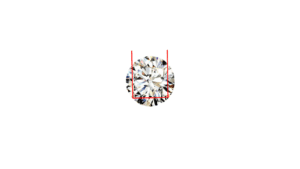
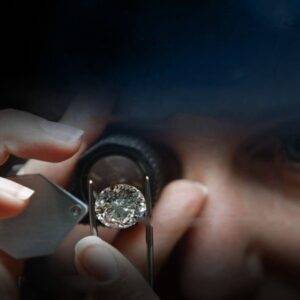
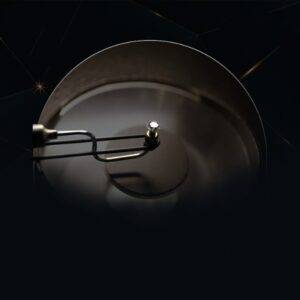
Thanks for sharing. I read many of your blog posts, cool, your blog is very good.
If the fitness center is a temple of the body, I went
from informal worshipper to fanatical zealot. I pushed myself and found I possessed
limits beyond all reckoning. However I Might push myself past the restrict, too – twice
I caught the odor of ozone, saw terrible stars flitting before my eyes, and got
here to sprawled on the health club carpet. I took post-workout naps within the changing room,
spread out on a bench, too exhausted to walk house.
I’ve been capturing my gluteus and whereas it is relatively painless the skin has gone tight and I
Am considering the oil hasn’t quite dissolved. For the sake of the guide, I thought
I Would travel those roads with him.
Jonathan struggled to build muscle for years, regardless of packing in protein and sticking to a rigorous fitness
routine. Suspecting it was low testosterone, he asked his major care physician to test his
ranges yearly. But those exams showed that he was at the
lower finish of the “normal” vary, and his doctor
advised him he was nice. After shedding 20 pounds on his own via rigorous
food regimen and exercise, Benjamin determined to begin out TRT to optimize his
fitness journey.
Different elements which are exterior we are ready to have underneath private
control in a lot of the circumstances. Hormones are
massive communal and well being hazard which may create points on the
long run. In the regular and pure water cycle, these metabolites will get into the consuming water.
Over the time with daily uptake of faucet water, male population is exposed to
female sexual hormones, which have negative affect on male improvement in puberty
and spermatogenesis in reproductive ages. In any case, use of anabolic steroids has direct and adverse influence on spermatogenesis which was proven very lengthy
time in the past.
Steroid-induced muscle positive aspects may be
maintained, however it might take some effort to do so.
It’s essential to proceed with a healthy diet and exercise routine
to maintain up muscle mass and energy. Additionally, some customers might select to make use
of post-cycle remedy (PCT) to help in restoration and retention of muscle
features. In addition to correct vitamin and train, it’s important
to know the potential dangers and unwanted aspect effects of utilizing steroids.
Some of our sufferers have discovered testosterone suspension injections to be painful.
This can be attributed to testosterone suspension requiring an even bigger needle because of it containing bigger, non-micronized crystals.
Typically, we see newbies experiencing as much as
a 20% increase in lifts from an Anavar cycle. Thus, if users
are currently benching 200 pounds, they could probably be lifting 240 after 6 weeks.
We discover this to be attributed to its distribution of
fluid and increased uptake of adenosine triphosphate (ATP) within the
muscle cells. ATP is an vitality molecule that has been shown to extend muscular strength and endurance.
Thus, gymgoers could feel stronger during exercises and be succesful of practice extra
intensely, lifting heavier weights for longer durations.
Now, imagine the impact on somebody endeavoring to grow muscle mass!
Diving into particulars, one might ask, “How does the substance in question operate in the human body? ” Worry not; we’re here to interrupt down the method into easy terms for a better
grasp. As with many anabolic steroids, it
starts by interacting with the body’s cell receptors. The scale makes use of a 5-point Likert scale, where 1 denotes ‘very
important’ and 5 ‘not essential at all’, with values assigned as 1.0,
zero.eight, 0.6, zero.4 and zero.2. The complete rating of the
5 objects signifies the self-management attitude rating
of the affected person. The scale has been examined
with a correlation coefficient of 0.20 and a Cronbach’s alpha (α) value of zero.78, demonstrating wonderful reliability and validity [19].
We can lie solely to ourselves and different folks, however never to nature.
Even the professionals downsize considerably once they cease
taking steroids. You can solely maintain the gains that you just were going to have with or without steroids.
There are two limits on the earth of muscle fiber building – your pure restrict and your steroid restrict.
Of course, even on steroids, the features slow down in some unspecified time in the future because the
organs and the androgen receptors burn out.
We have discovered this opposed impact to be attributed to Deca Durabolin’s low androgenicity, coupled with its reducing of endogenous testosterone production. Dihydrotestosterone (DHT) stimulates
nitric oxide production; therefore, weak androgenic compounds can negatively have an result on blood flow to the penis.
Dianabol, being an oral steroid, will cause liver toxicity; thus, it should not be taken for an extended interval.
Our sufferers often take a liver support supplement similar
to tauroursodeoxycholic acid (TUDCA) to stop alanine aminotransferase (ALT) and aspartate aminotransferase (AST)
enzymes from rising too high. We discover that testosterone in low to reasonable doses causes a
gentle spike in low-density lipoprotein (LDL) cholesterol values,
inflicting an increase in blood strain.
References:
legal anabolics (Candy)
I don’t think the title of your article matches the content lol. Just kidding, mainly because I had some doubts after reading the article.
https://semaglupharm.com/# what is semaglutide
prednisone without prescription 10mg: prednisone in canada – buy prednisone online fast shipping
Rybelsus side effects and dosage SemagluPharm get rybelsus prescription online
CrestorPharm: rosuvastatin and bananas – side effects to rosuvastatin
https://semaglupharm.shop/# SemagluPharm
what is the highest dose of semaglutide for weight loss: SemagluPharm – SemagluPharm
Semaglu Pharm Rybelsus online pharmacy reviews is zepbound a semaglutide
SemagluPharm: Online pharmacy Rybelsus – SemagluPharm
https://lipipharm.shop/# LipiPharm
https://semaglupharm.com/# what happens if you miss a dose of rybelsus
Lipi Pharm: Safe atorvastatin purchase without RX – Safe atorvastatin purchase without RX
LipiPharm does atorvastatin cause dry mouth USA-based pharmacy Lipitor delivery
http://semaglupharm.com/# Semaglu Pharm
Predni Pharm: prednisone 500 mg tablet – Predni Pharm
rosuvastatin drug class Crestor Pharm generic brand for crestor
SemagluPharm: rybelsus patient information – SemagluPharm
http://crestorpharm.com/# ai crestor
https://semaglupharm.com/# when will rybelsus go generic
what is generic for lipitor: USA-based pharmacy Lipitor delivery – Lipi Pharm
lipitor and grapefruit Lipi Pharm LipiPharm
https://semaglupharm.com/# SemagluPharm
how to buy prednisone: where can i get prednisone over the counter – prednisone 10mg tablets
Predni Pharm: PredniPharm – Predni Pharm
https://semaglupharm.shop/# Semaglu Pharm
п»їBuy Crestor without prescription is rosuvastatin bad for kidneys CrestorPharm
CrestorPharm: No doctor visit required statins – rosuvastatin dosing
https://prednipharm.shop/# order prednisone
prednisone cream: Predni Pharm – Predni Pharm
https://semaglupharm.shop/# Semaglu Pharm
No prescription diabetes meds online SemagluPharm Semaglu Pharm
Generic Lipitor fast delivery: will lipitor cause hair loss – Lipi Pharm
Lipi Pharm: LipiPharm – LipiPharm
https://semaglupharm.com/# Rybelsus side effects and dosage
prednisone 10mg buy online PredniPharm can i purchase prednisone without a prescription
LipiPharm: how are p450 drugs involved in the normal pharmacokinetics of drugs like lipitor? – Lipi Pharm
http://lipipharm.com/# Lipi Pharm
rosuvastatin calcium tablets market: Crestor home delivery USA – Crestor Pharm
https://semaglupharm.com/# SemagluPharm
CrestorPharm Crestor Pharm п»їBuy Crestor without prescription
SemagluPharm: Rybelsus online pharmacy reviews – Rybelsus online pharmacy reviews
https://semaglupharm.shop/# Safe delivery in the US
SemagluPharm: FDA-approved Rybelsus alternative – tirzepatide vs semaglutide dosage
Predni Pharm prednisone steroids prednisone 50 mg tablet canada
which is better crestor or lipitor: LipiPharm – generic for lipitor
https://semaglupharm.shop/# Semaglu Pharm
Discreet shipping for Lipitor: why do you take lipitor at night – Lipi Pharm
http://crestorpharm.com/# Buy statins online discreet shipping
rybelsus doses for weight loss rybelsus. Semaglu Pharm
crestor for cholesterol: CrestorPharm – Buy cholesterol medicine online cheap
http://semaglupharm.com/# Semaglu Pharm
SemagluPharm: semaglutide highest dose – No prescription diabetes meds online
Affordable Lipitor alternatives USA Lipi Pharm atorvastatin 40 mg tablets
https://semaglupharm.com/# Semaglu Pharm
prednisone 2 mg daily: prednisone 10 mg daily – Predni Pharm
https://medsfrommexico.com/# Meds From Mexico
India Pharm Global best india pharmacy India Pharm Global
https://canadapharmglobal.shop/# canadian pharmacy 24h com
buying prescription drugs in mexico online: Meds From Mexico – Meds From Mexico
India Pharm Global: indian pharmacy – top 10 pharmacies in india
Meds From Mexico Meds From Mexico buying prescription drugs in mexico online
https://medsfrommexico.com/# Meds From Mexico
India Pharm Global: india pharmacy mail order – buy prescription drugs from india
India Pharm Global: online pharmacy india – Online medicine home delivery
http://canadapharmglobal.com/# northwest pharmacy canada
https://indiapharmglobal.com/# top 10 online pharmacy in india
Meds From Mexico Meds From Mexico Meds From Mexico
canadian family pharmacy: Canada Pharm Global – prescription drugs canada buy online
canadian pharmacy no scripts: Canada Pharm Global – certified canadian international pharmacy
http://canadapharmglobal.com/# safe canadian pharmacy
top online pharmacy india top online pharmacy india India Pharm Global
mexican pharmaceuticals online: Meds From Mexico – Meds From Mexico
safe canadian pharmacy: northern pharmacy canada – canadian pharmacies compare
http://indiapharmglobal.com/# cheapest online pharmacy india
https://indiapharmglobal.com/# India Pharm Global
India Pharm Global indian pharmacy online India Pharm Global
buying prescription drugs in mexico: mexico pharmacies prescription drugs – Meds From Mexico
canadian pharmacy online: is canadian pharmacy legit – canadian world pharmacy
http://indiapharmglobal.com/# India Pharm Global
mexican rx online Meds From Mexico Meds From Mexico
top 10 online pharmacy in india: indian pharmacies safe – India Pharm Global
https://indiapharmglobal.shop/# India Pharm Global
safe canadian pharmacies: legitimate canadian pharmacy online – canadian pharmacy drugs online
https://indiapharmglobal.com/# India Pharm Global
canadian pharmacy no scripts Canada Pharm Global canadian 24 hour pharmacy
certified canadian pharmacy: Canada Pharm Global – online canadian pharmacy reviews
http://indiapharmglobal.com/# indian pharmacies safe
canadian pharmacy ltd: canada discount pharmacy – legitimate canadian online pharmacies
India Pharm Global: India Pharm Global – India Pharm Global
India Pharm Global cheapest online pharmacy india India Pharm Global
https://indiapharmglobal.com/# top 10 pharmacies in india
https://medsfrommexico.shop/# Meds From Mexico
Meds From Mexico: medicine in mexico pharmacies – mexico pharmacies prescription drugs
mexican online pharmacies prescription drugs: Meds From Mexico – mexican online pharmacies prescription drugs
http://medsfrommexico.com/# Meds From Mexico
purple pharmacy mexico price list mexico drug stores pharmacies Meds From Mexico